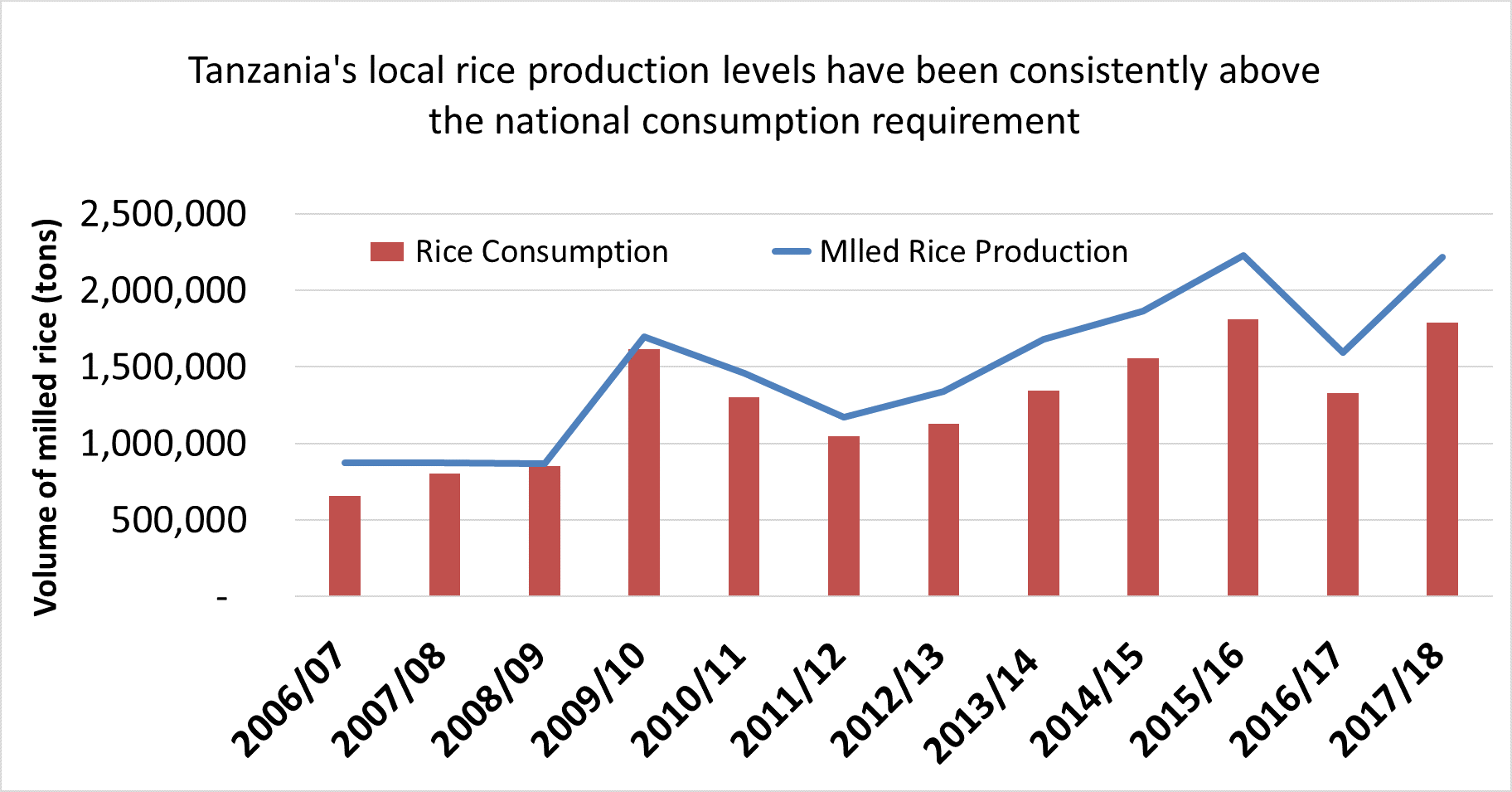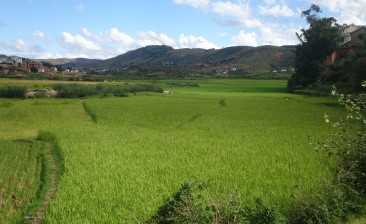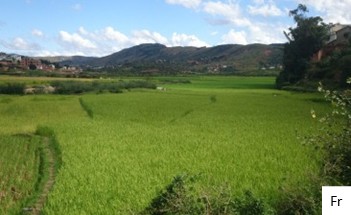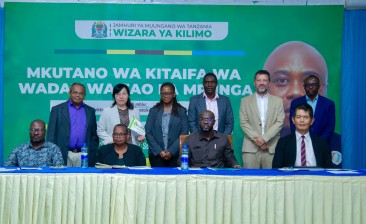Tanzania, June 2019
CARD Working Week for developing NRDS-2 in Tanzania
Rice has long been a major staple food crop in Tanzania. Tanzania joined the CARD initiative during its first phase in 2009; and has achieved remarkable progress in expanding local rice production through implementation of the first National Rice Development Strategy (NRDS-1; 2009-2018). Government data shows that the milled rice production increased from 867,000 tons in 2008-09 to 2,219,000 tons in 2017-18. Although the domestic consumption also increased from 85,000 tons to 1,789,517 tons during the same period; the surplus production has put Tanzania as one of the first countries to achieve self-sufficiency in rice production in the region in the recent decades. Rice varieties produced in Tanzania such as Supa and SARO-5 (generally referred as Tanzania rice) are extremely popular in markets in Eastern and Southern Africa. Given the rapid pace of growth in rice consumption in the Eastern and Southern African countries, Tanzania rice industry provides ample ammunition for the government’s drive on poverty reduction and economic growth.
Tanzania’s Ministry of Agriculture (MoA) expressed interest in continuing its membership through the 2nd phase of CARD. Subsequently it constituted a new taskforce for developing the NRDS-2 (2019-2030). Earlier, the taskforce got together and organized a preliminary working week in Moshi during 6-8 December, 2018. It was agreed that the data available for the various aspects of the rice value chain are not adequate and that additional data need to be collected before formulating the NRDS-2. The taskforce prepared a concept note and arranged funding for this activity from JICA and FAO. While JICA supported the field work on data collection from across the different rice growing regions, the FAO supported the validation of the collected data at Morogoro.
Following the data validation activity, Tanzania’s NRDS taskforce requested the CARD Secretariat to organize a workshop for drafting the NRDS-2 between 14th and 23rd June, 2019. A CARD consultant participated in the workshop and provided technical assistance to the taskforce between 14th and 18th June, 2019. The outputs from this CARD activity are summarized below.
CARD activity and the results
With support from JICA office, CARD organized the workshop at Panama Resorts Hotel in Moshi, Tanzania. A regional consultant from CARD facilitated the discussions on the development of the NRDS-2 at the workshop. About 16 NRDS taskforce members representing different public and private organizations participated in the workshop. The consultant first briefed on the expected outputs of the workshop and the outline of the NRDS format proposed by the CARD Secretariat. The participants suggested that Tanzania’s NRDS-2 shall follow the same format as the NRDS-1, and hence decided to use the NRDS-1 as the zero draft for developing the second NRDS.
The participants also shared the data collected from the exercise supported by the FAO and JICA funds. Based on the available data, it was concluded that Tanzania has achieved self-sufficiency in rice (see Chart). Given the scopes for further expansion of area under rice cultivation and the potential for enhancing the on-farm rice productivity levels, the NRDS taskforce has set the goal for the NRDS-2 was set as ‘to sustain national self-sufficiency and contribute to regional sufficiency, and become the market leader’.
The NRDS-2 intends to double the rice productivity from 2 t /Ha to 4 t /Ha and double the area under the rice production from 1.1 million Ha to 2.2 million Ha by 2030. The doubling of these two factors shall lead to the production of 8.8 million tons (from the current 2.2 million tons) of milled rice by 2030. Although the domestic consumption of rice will also increase to 2.6 million tons by 2030, the surplus (5.2 million tons) will be available for exportation to the markets in the region and beyond.

Given the constraints in the value chain, the NRDS taskforce members have planned to capacitate the various segments of the value chain through four key strategic objectives under the NRDS-2. They include (i) improving the climate resilience of rice production through varieties, water management and extension, (ii) enhance regional competitiveness of the locally produced rice through improved input and processing technologies, (iii) orient rice farming systems, especially the smallholder rice production systems, and (iv) expand the area under rice cultivation in irrigated, rain fed lowland and upland ecosystems.
Using Value chain Intervention Element Matrix (VIEM); the taskforce members identified the various challenges in addressing the above-mentioned goal and objectives, and elaborated possible interventions that could tackle the challenges. These challenges and interventions will be captured under the respective NRDS-2 chapters. The taskforce agreed that a new Rice Secretariat shall be set up under the Ministry of Agriculture, to oversee the progress and implementation of the NRDS-2 in the country. It is expected that the NRDS taskforce members will complete the discussions and come up with a first draft on the NRDS-2 by the week of 24th June.
Way forward
CARD will provide the necessary technical assistance in finalizing Tanzania’s NRDS-2. Using the NRDS-1 as template, the NRDS taskforce has planned to prepare the draft NRDS-2 by the end of June and share with stakeholders for their inputs and suggestions in July. Soon after, the taskforce will organize a national rice stakeholder’s workshop to validate the NRDS-2, before seeking an official approval by the Ministry of Agriculture.









